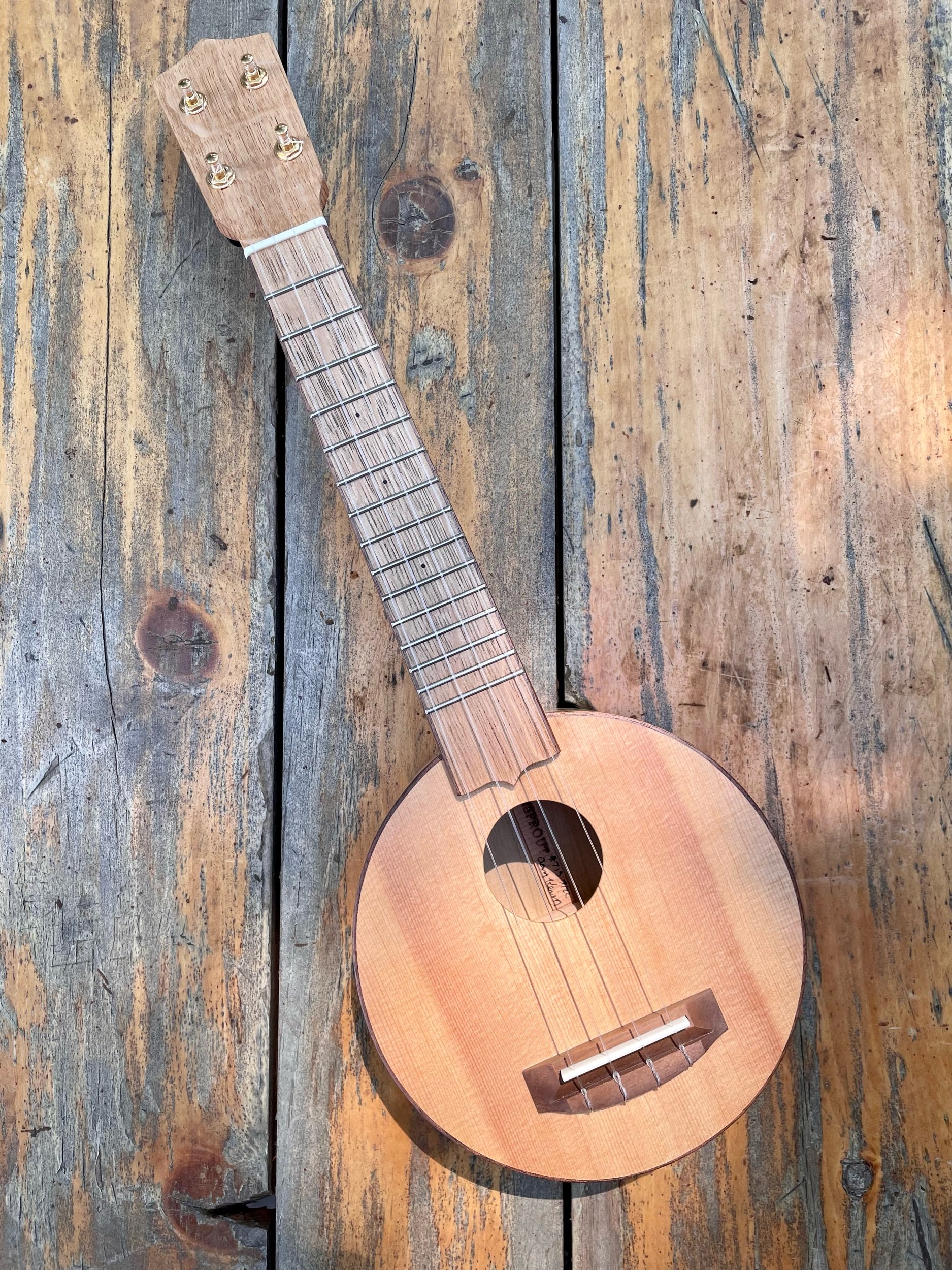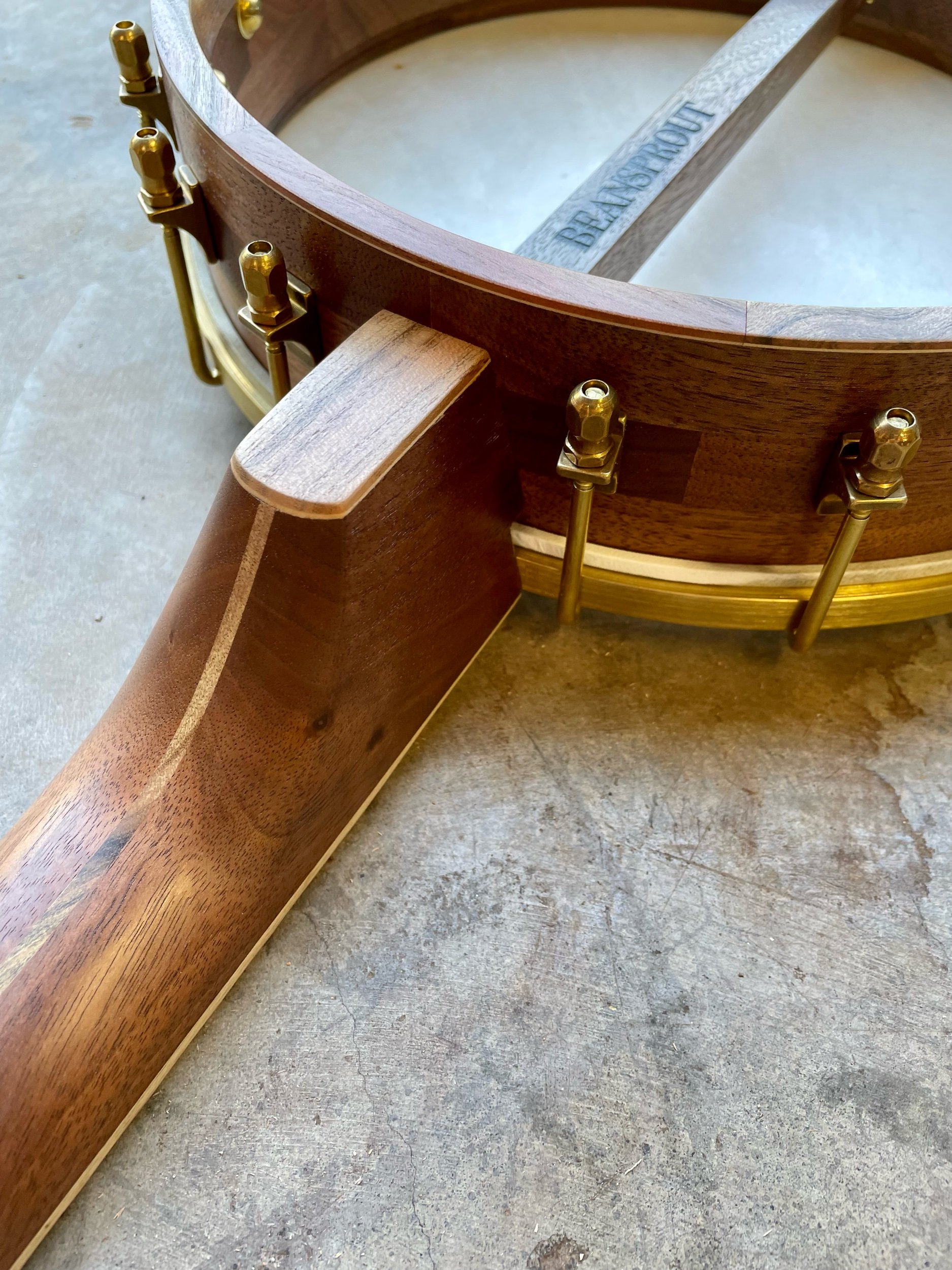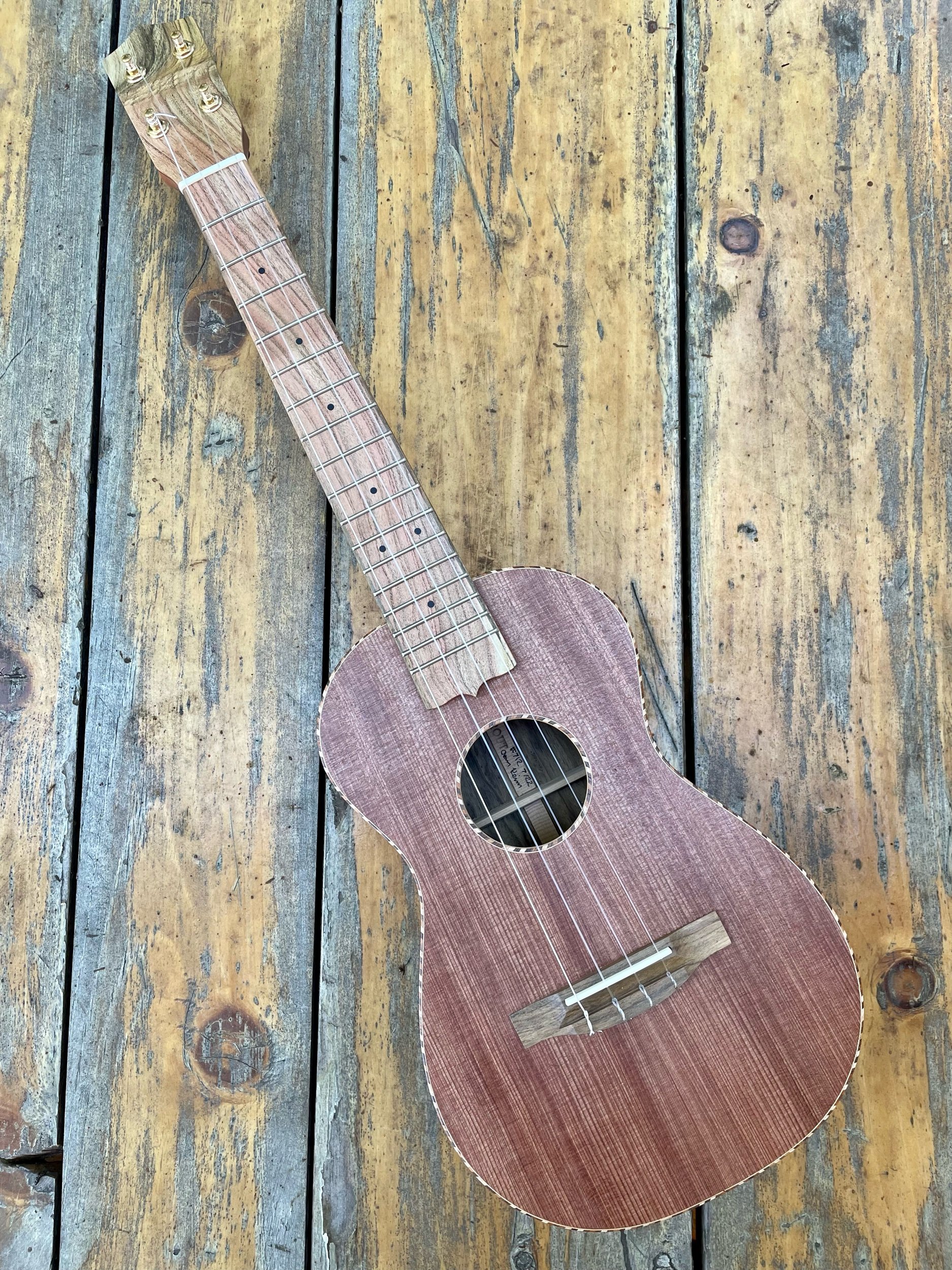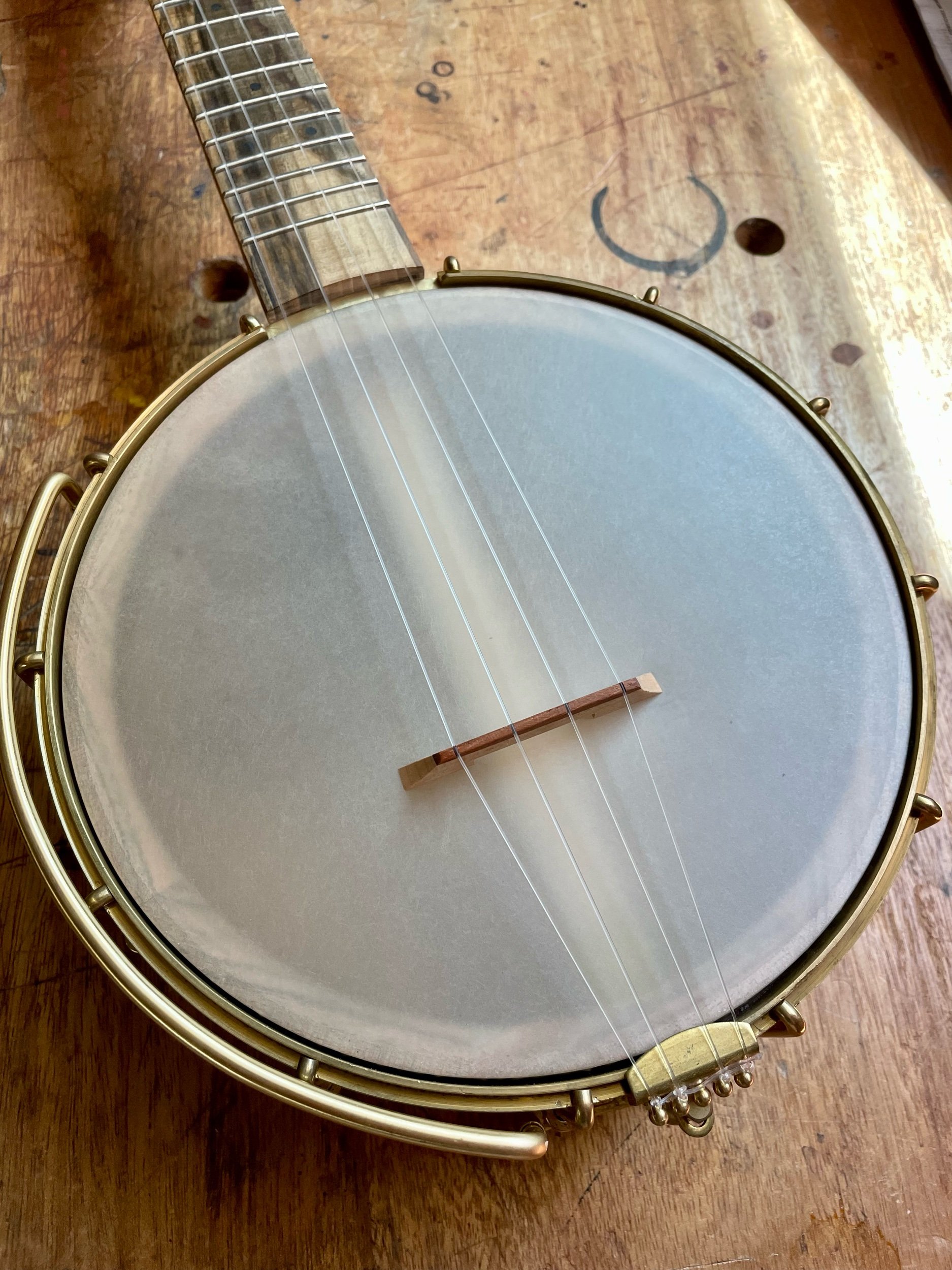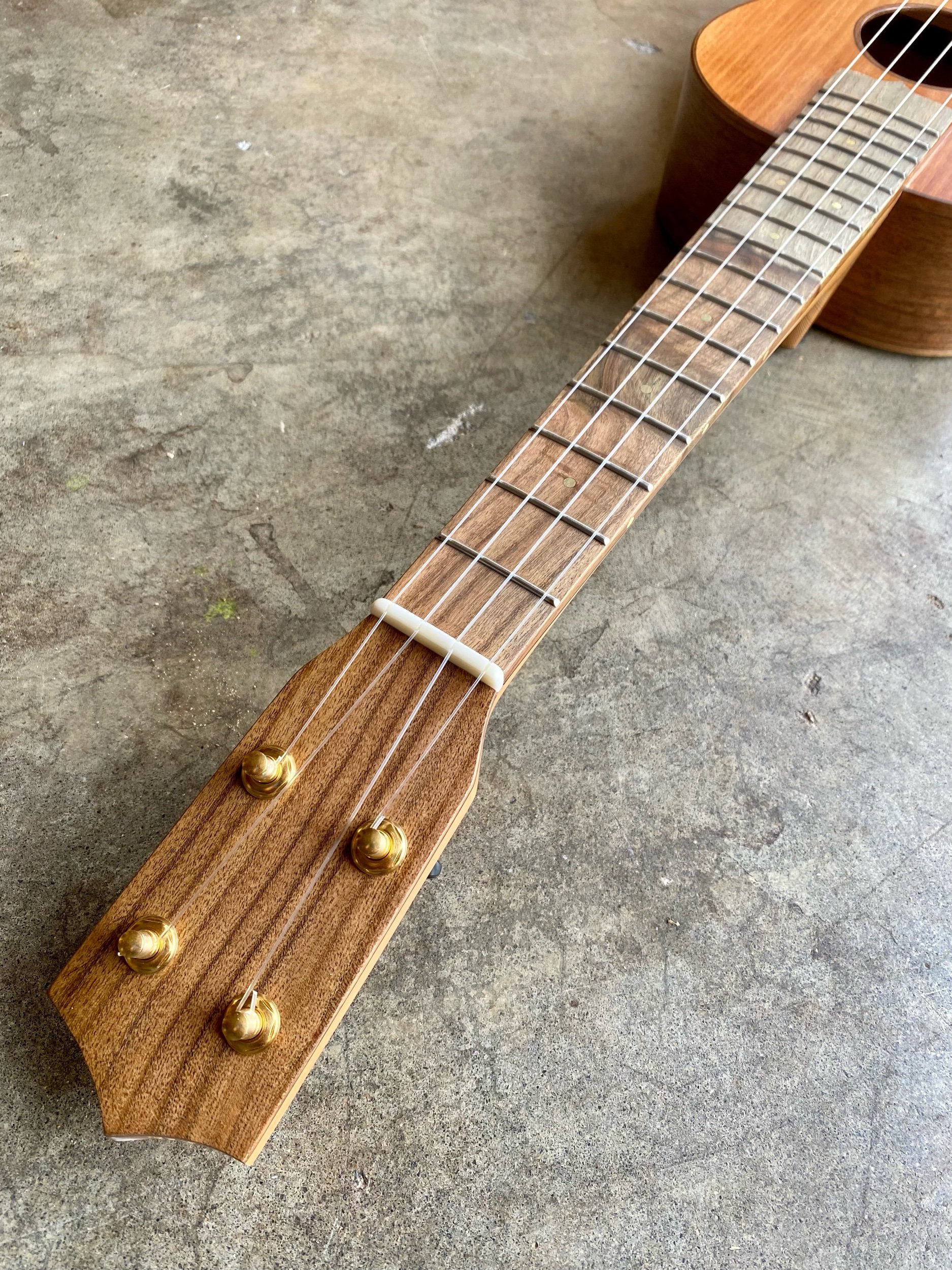This one is crisp and vibrant, a really good summer vibes instrument. Soprano scale, geared tuners, fluorocarbon strings, bone nut and saddle. Made from scraps and cutoffs from other projects. Spruce top, curly Myrtle back and sides, Fir neck, Oak fretboard/head plate, Walnut binding and bridge.
John brought his scout with him to Croatia!

